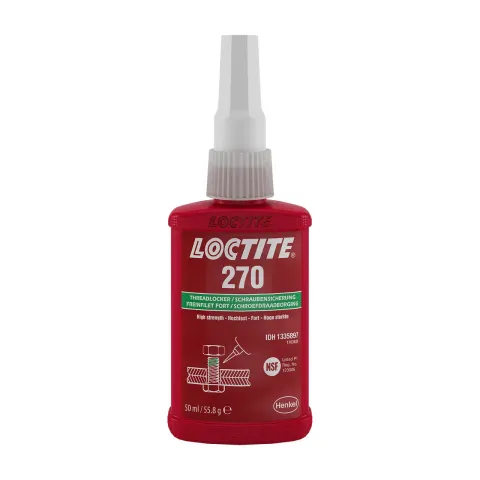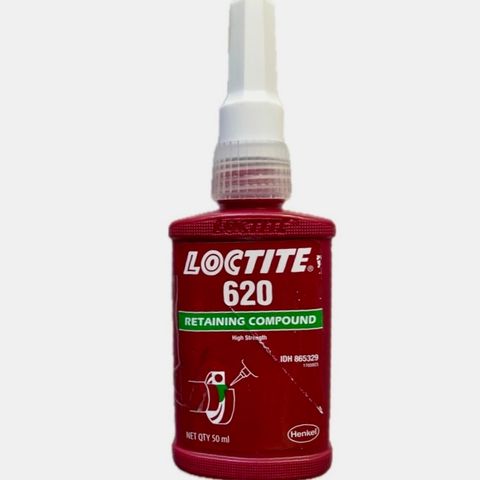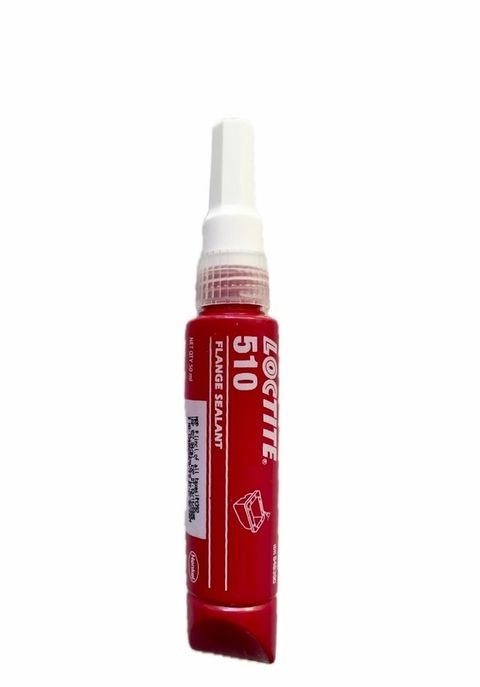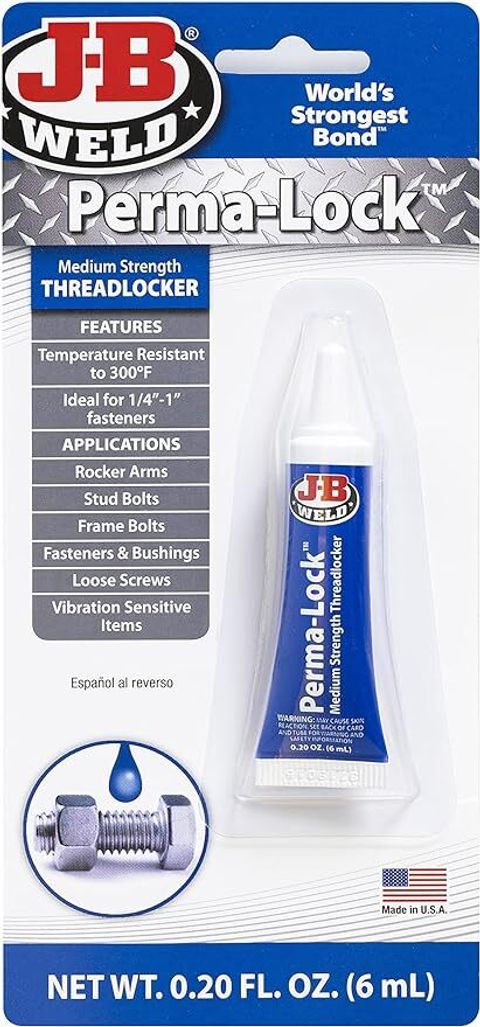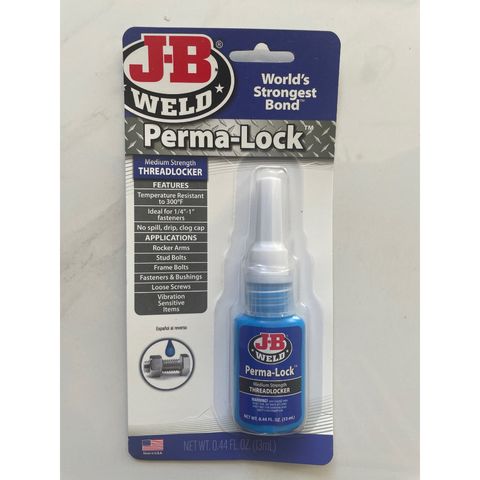The Ultimate Guide to Using Thread Locker: Preventing Loose Screws and Improving Mechanical Stability
Loose screws can be a real headache. Not only do they compromise the integrity of your mechanical projects, but they can also be a safety hazard. So, how can you prevent screws from coming loose and improve the overall stability of your assembly? The answer lies in using thread locker. In this comprehensive guide, we will walk you through everything you need to know about the wonders of thread locker and how it can revolutionize your mechanical projects.
From understanding the different types of thread locker, such as low, medium, and high strength, to learning about the proper application techniques, this guide has got you covered. We will also delve into the advantages and limitations of using thread locker, as well as provide practical tips for troubleshooting common issues.
Whether you are a professional mechanic or a weekend DIYer, this ultimate guide will equip you with the knowledge and skills to prevent loose screws and ensure the longevity and stability of your assemblies. Get ready to take your mechanical projects to the next level with the power of thread locker!
What is thread locker and why is it important?
Thread locker is a chemical compound that is applied to the threads of screws, bolts, and other fasteners to prevent them from loosening over time. This is a critical issue in many mechanical applications, as loose fasteners can lead to equipment failure, safety hazards, and costly repairs.
The importance of thread locker cannot be overstated. Mechanical assemblies, from automotive components to industrial machinery, rely on the secure attachment of various parts. When screws or bolts become loose, the entire system can be compromised, leading to potential malfunctions, accidents, and even catastrophic failures. Thread locker helps to maintain the integrity of these connections, ensuring that the assembly remains stable and secure throughout its lifetime.
By preventing fasteners from backing out, thread locker plays a crucial role in safeguarding the performance and reliability of mechanical systems. It is an essential tool for engineers, mechanics, and DIY enthusiasts alike, as it helps to mitigate the risk of loose screws and bolts, which can have far-reaching consequences in terms of safety, functionality, and overall product quality. Investing in the right thread locker can make all the difference in the success and longevity of your mechanical projects.
Types of thread locker and their applications
Thread lockers come in a variety of formulations, each designed to meet specific needs and applications. The three main types of thread locker are low-strength, medium-strength, and high-strength.
Low-strength thread lockers are typically used for applications where the fasteners need to be removable, such as in electronics, appliances, and furniture assembly. These low-viscosity formulas create a temporary bond that allows for easy disassembly, making them ideal for applications where future access to the fasteners may be required.
Medium-strength thread lockers are the most versatile and commonly used type. They provide a durable, long-lasting bond that can withstand moderate vibrations and stresses, making them suitable for a wide range of applications, including automotive, industrial machinery, and general DIY projects. These thread lockers strike a balance between the ease of disassembly and the strength of the bond.
High-strength thread lockers are designed for the most demanding applications, where the fasteners must remain permanently locked in place. These formulas create an extremely robust bond that can withstand high levels of vibration, shock, and stress. They are commonly used in critical infrastructure, heavy machinery, and aerospace applications, where the failure of a single fastener could have catastrophic consequences.
Benefits of using thread locker
Using thread locker offers numerous benefits that can significantly improve the performance and longevity of your mechanical assemblies. Here are some of the key advantages of incorporating thread locker into your projects:
Preventing Loosening: The primary function of thread locker is to prevent fasteners from loosening due to vibration, thermal expansion, or other external forces. This ensures that the components in your assembly remain securely connected, reducing the risk of failure and maintaining the overall structural integrity.
Improving Safety: Loose screws and bolts can pose a serious safety hazard, as they can lead to equipment failure, unexpected disassembly, and even personal injury. By using thread locker, you can mitigate these risks and create a safer working environment for yourself and others.
Reducing Maintenance: With thread locker in place, you can significantly reduce the need for frequent inspections and tightening of fasteners. This saves time, labor, and resources, allowing you to focus on other aspects of your project or business. The long-lasting bond provided by thread locker can extend the maintenance intervals, leading to greater efficiency and cost savings.
How to apply thread locker correctly
Proper application of thread locker is crucial to ensuring its effectiveness. Here are the steps to follow for a successful application:
Surface Preparation: Begin by ensuring that the surfaces are clean, dry, and free of any contaminants, such as oil, grease, or dirt. This will allow the thread locker to form a strong bond with the threads.
Applying the Thread Locker: Apply a small amount of thread locker to the first few threads of the fastener, avoiding the tip and the last few threads. This helps to create a secure seal while still allowing for disassembly if needed.
Tightening the Fastener: Tighten the fastener to the appropriate torque specification, as recommended by the manufacturer. This ensures that the thread locker can form a complete and uniform bond around the threads.
Curing Time: Allow the thread locker to cure for the recommended amount of time, typically ranging from a few minutes to several hours, depending on the specific product. This curing period is essential for the thread locker to reach its full strength and effectiveness.
Proper application techniques are crucial for ensuring the long-term performance and reliability of your thread-locked assemblies. By following these steps, you can maximize the benefits of thread locker and prevent costly failures down the line.
Common mistakes to avoid when using thread locker
While thread locker is a powerful tool for securing fasteners, there are several common mistakes that can compromise its effectiveness. Avoiding these pitfalls will help you get the most out of your thread locker and ensure the success of your mechanical projects.
Insufficient Surface Preparation: Failing to properly clean and degrease the surfaces before applying the thread locker can lead to poor adhesion and premature loosening of the fasteners. Always take the time to thoroughly prepare the surfaces for optimal bonding.
Applying Too Much or Too Little Thread Locker: Using an excessive amount of thread locker can cause it to ooze out and create a messy appearance, while using too little may not provide adequate coverage and bonding. Follow the manufacturer's recommendations for the appropriate amount of thread locker to apply.
Incorrect Tightening Torque: Overtightening or undertightening the fasteners can compromise the effectiveness of the thread locker. Refer to the manufacturer's specifications to ensure that the fasteners are tightened to the proper torque.
Failing to Allow Proper Curing Time: Rushing the curing process by reassembling the components too soon can result in a weaker bond and a higher risk of loosening. Always allow the thread locker to cure for the recommended duration before putting the assembly into service.
Reusing Thread-Locked Fasteners: Attempting to reuse fasteners that have been previously secured with thread locker can lead to unreliable results. The thread locker may not adhere properly to the previously coated surfaces, compromising the bond strength.
By avoiding these common mistakes, you can ensure that your thread-locked assemblies remain secure and stable, providing the long-term performance and reliability you expect.
Tips for choosing the right thread locker for your project
Selecting the appropriate thread locker for your project is crucial to ensuring its success. Here are some tips to help you choose the right product for your needs:
Consider the Strength Requirements: Evaluate the level of vibration, stress, and load that the fasteners will be subjected to. Low-strength thread lockers are suitable for light-duty applications, while medium- and high-strength formulas are better suited for more demanding environments.
Determine the Disassembly Needs: If you anticipate the need for future disassembly, opt for a low- or medium-strength thread locker that can be removed with relative ease. High-strength formulas are designed for permanent applications where disassembly is not required.
Assess the Material Compatibility: Ensure that the thread locker you choose is compatible with the materials used in your assembly, such as metals, plastics, or coatings. Some thread lockers may not be suitable for certain materials and could cause damage or interfere with the bond.
Consider the Curing Time: Depending on your project timeline and assembly process, you may need to choose a thread locker with a specific curing time. Faster-curing formulas can be beneficial for time-sensitive applications, while slower-curing options may be more suitable for larger assemblies.
Look for Specialized Formulations: Some thread lockers are designed for specific applications, such as high-temperature environments, corrosive conditions, or food-grade requirements. If your project has unique needs, research specialized thread locker formulas that can address those requirements.
By carefully considering these factors, you can select the thread locker that best meets the needs of your project, ensuring the long-term stability and performance of your mechanical assemblies.
Case studies of thread locker in action
To illustrate the real-world benefits of using thread locker, let's explore a few case studies:
Automotive Application: In a high-performance sports car, the engine and suspension components are subjected to extreme vibrations and stresses during operation. The manufacturer used a high-strength thread locker on the critical fasteners to prevent them from loosening, which could have led to catastrophic failure and potentially put the driver at risk. The thread locker's robust bond ensured that the vehicle's handling and safety were maintained throughout its lifetime.
Industrial Machinery: In a large industrial mixer used in a chemical processing plant, the fasteners that secured the mixing blades were prone to loosening due to the constant vibrations and heavy loads. The plant's maintenance team applied a medium-strength thread locker to the fasteners, which eliminated the need for frequent inspections and tightening. This resulted in reduced downtime, increased productivity, and improved safety for the plant's workers.
Aerospace Application: In the construction of a commercial aircraft, the use of thread locker was crucial for securing the fasteners that held the airframe and avionics components in place. The high-strength formulation used ensured that the aircraft's structural integrity and electronic systems remained stable, even in the face of extreme environmental conditions and turbulence during flight. This attention to detail contributed to the aircraft's overall safety and reliability.
These case studies demonstrate the versatility and importance of thread locker in a wide range of industries, from automotive and industrial to aerospace. By preventing loose screws and bolts, thread locker plays a vital role in ensuring the safety, performance, and longevity of mechanical systems.
FAQ about thread locker
Q: What is the difference between low-strength, medium-strength, and high-strength thread lockers?
A: The main differences lie in the bond strength and the ease of disassembly. Low-strength thread lockers create a temporary bond that allows for easy removal, making them suitable for applications where future access to the fasteners is required. Medium-strength thread lockers provide a durable, long-lasting bond that can withstand moderate vibrations and stresses, while high-strength formulas create an extremely robust bond that is designed for permanent applications with high levels of vibration, shock, and stress.
Q: How long does thread locker take to cure?
A: The curing time for thread locker can vary depending on the specific product and the environmental conditions. Generally, low-strength thread lockers can cure in as little as a few minutes, while medium- and high-strength formulas may take several hours or even up to 24 hours to reach their full strength. It's important to follow the manufacturer's recommended curing time to ensure the effectiveness of the thread locker.
Q: Can thread locker be removed once applied?
A: Yes, thread locker can be removed, but the ease of removal depends on the strength of the formula. Low-strength thread lockers can be disassembled with hand tools, while medium-strength and high-strength formulas may require the use of heat, solvents, or specialized removal tools to break the bond. It's important to note that attempting to reuse fasteners that have been previously secured with thread locker may not provide reliable results.
Q: Is thread locker safe to use?
A: Most thread locker formulas are considered safe for use when applied according to the manufacturer's instructions. However, some products may contain chemicals or solvents that require proper ventilation and personal protective equipment (PPE) during application. It's always recommended to review the safety data sheet (SDS) and follow the safety guidelines provided by the manufacturer.
Q: Can thread locker be used on plastic or non-metallic fasteners?
A: Yes, thread locker can be used on plastic or non-metallic fasteners, but it's important to ensure compatibility. Some thread locker formulas may not be suitable for certain materials, as they could cause damage or interfere with the bond. Always check the manufacturer's recommendations and perform compatibility testing before using thread locker on non-metallic fasteners.
Where to buy thread locker and recommended brands
Thread locker is widely available from a variety of hardware stores, automotive parts retailers, and online marketplaces. Some of the top recommended brands for thread locker include:
Loctite: Loctite is a leading manufacturer of thread lockers and a trusted brand in the industry. They offer a wide range of formulations, including low-strength, medium-strength, and high-strength options, as well as specialized products for unique applications.
JB Weld: is another well-known brand that produces a comprehensive line of thread lockers. Their products are widely used in the automotive, industrial, and DIY sectors, offering reliable performance and a variety of strengths.
https://www.willpowergroupsg.com/collections/threadlockers
When purchasing thread locker, it's important to carefully read the product descriptions, safety information, and application instructions to ensure that you select the right formulation for your specific needs. Additionally, consider purchasing from reputable retailers or authorized distributors to ensure the authenticity and quality of the product.
Conclusion: Ensuring mechanical stability with thread locker
In the world of mechanical assemblies, loose screws and bolts can be a constant source of frustration and potential danger. But with the power of thread locker, you can bid farewell to these pesky issues and enjoy the benefits of improved stability, safety, and reliability in your projects.
Throughout this comprehensive guide, we've explored the various types of thread locker, their applications, and the advantages they offer. From preventing loosening and improving safety to reducing maintenance and extending the lifespan of your assemblies, thread locker is a versatile tool that can revolutionize the way you approach mechanical work.
By mastering the proper application techniques and avoiding common mistakes, you can ensure that your thread-locked fasteners remain securely in place, even in the face of vibrations, stresses, and environmental factors. And with the tips for choosing the right thread locker for your specific project, you can tailor your solution to meet the unique needs of your mechanical systems.
Whether you're a professional mechanic, an industrial engineer, or a passionate DIYer, incorporating thread locker into your workflow can be a game-changer. By safeguarding the integrity of your assemblies, you can focus on the bigger picture, confident that your mechanical projects will perform reliably and safely for years to come.
So, embrace the power of thread locker and take your mechanical prowess to new heights. With this ultimate guide in your arsenal, you're well on your way to ensuring the long-term stability and success of your mechanical endeavors.


